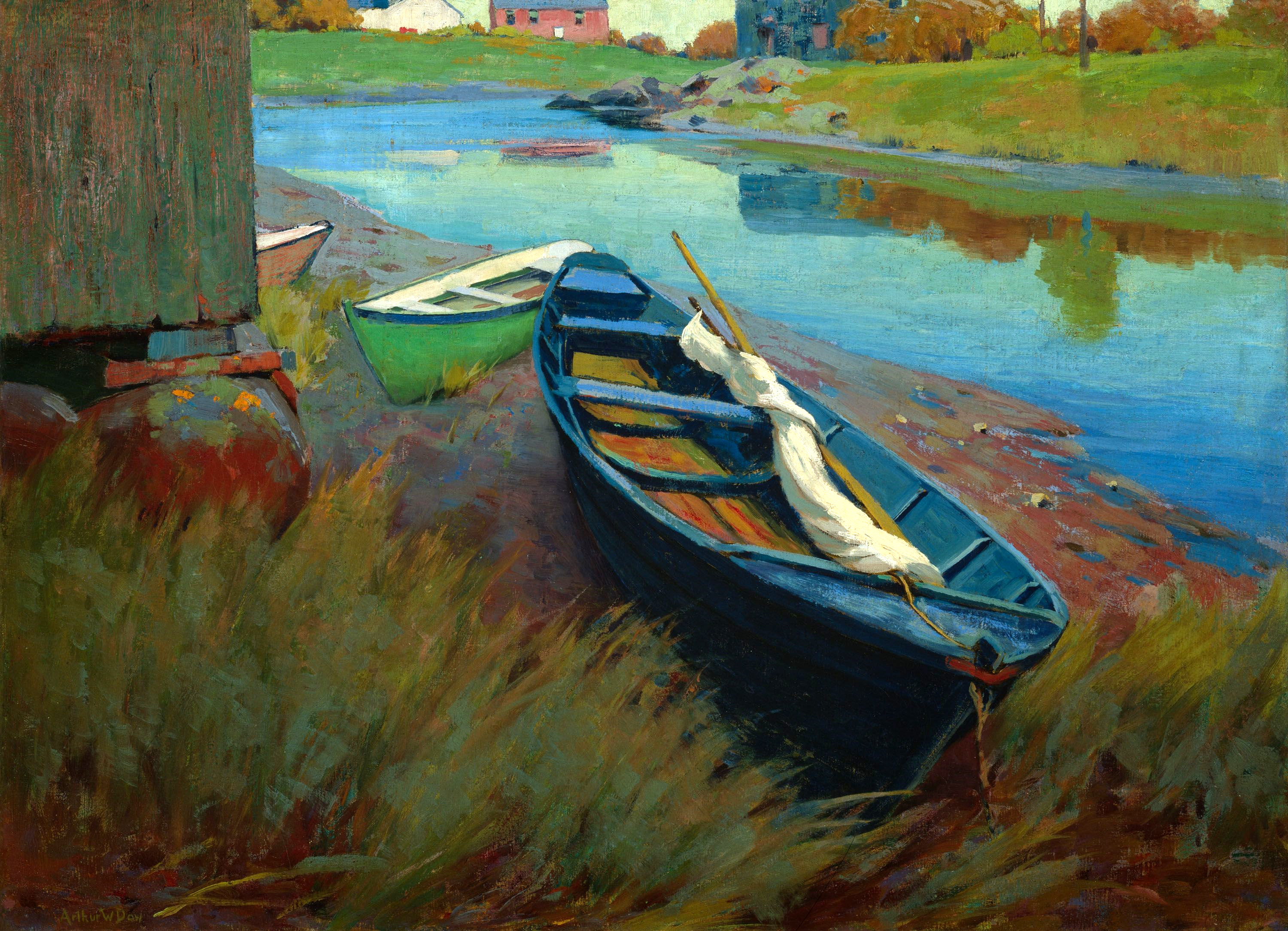Since we're on the topic of relief printmaking at the moment, having covered Norma Bassett Hall last month, let's talk for a little bit about one of the seminal figures for block printing in America as we know it: Arthur Wesley Dow (1857-1922).
 |
| Arthur Wesley Dow, reminding me strangely enough of the business cat meme, image courtesy of https://ipswich.wordpress.com/2014/06/25/arthur-wesley-dow/ |
|
|
| | |
|
|
Born in Ipswich, Massachusetts, Dow initially studied art in Boston under James M. Stone before traveling to Paris to enroll at the
Academie Julian. After returning to the United States, he set up his own studio in Boston, where he began taking students of his own. In addition to his own career as an artist, Dow also became a renowned art educator, teaching at such schools as the
Pratt Institute, the
Art Students League, and
Columbia University Teacher's College. He also started his own summer school at Ipswich, which he conducted until 1907. Some of his better known students include
Max Weber,
Georgia O'Keeffe, and
Alvin Langdon Coburn.
 |
| Arthur Wesley Dow, Ipswich at Dusk, 1890, image courtesy of http://www.historicipswich.org/arthur-wesley-dow/ |
 |
| Arthur Wesley Dow, Boats at Rest, ca. 1895, oil on canvas, The Art Institute of Chicago. Image courtesy of https://commons.wikimedia.org/wiki/File:Boats_at_Rest_by_Arthur_Wesley_Dow_c1895.jpg |
Part of Dow's ongoing education legacy was due to his writing. In addition to teaching classes, he published
Composition: Understanding Line, Notan, and Color in 1899, which would secure his reputation as a leading art educator (you can still get in on Amazon today, in fact). Rather than have students copy from nature, he encouraged his pupils to break down their subjects into their most essential formal elements such as line, shape, and color. This is pretty standard for a lot of art instruction today, but at the time, it was considered pretty innovative, and helped encourage the development of American abstraction.
 |
| Arthur Wesley Dow, The Long Road, Argilla Road, 1898, color woodcut. Image courtesy of https://da.wikipedia.org/wiki/Arthur_Wesley_Dow |
One of the most notable influences in Dow's instruction was Japanese aesthetics, which exerted a strong influence on Western art during the last part of the 19th century. The title of the book I mentioned in the previous paragraph includes a
Japanese term,
notan, which refers to the balance of light and dark in a
composition. Japanese traditions also impacted his own work, most overtly so in his colored woodcuts, which were directly inspired by Japanese landscape prints. He had ample opportunity to study Japanese prints at the
Museum of Fine Arts in Boston, where he eventually was hired on.
Here are a few examples:
 |
| Arthur Wesley Dow, Clam Houses, ca. 1900. Image courtesy of http://www.woodblock-prints.com/awd_examples.html |
 |
| Arthur Wesley Dow, Bend of a River (Sunset), 1898. Image courtesy of http://www.woodblock-prints.com/awd_examples.html |
|
|
 |
| Arthur Wesley Dow, The Moon over the Hill, ca. 1905. Image courtesy of http://www.sothebys.com/en/auctions/ecatalogue/2014/prints-n09216/lot.8.html |
 |
| Arthur Wesley Dow, Snowy Peak, Los Angeles, 1911. Image courtesy of http://www.scholten-japanese-art.com/japanese_prints_3-02.htm |
Dow started experimenting with woodblock prints in the early 1890s, and may have been one of the earliest, if not the first, American artists to do so. Traditionally, Japanese prints are a collaborative effort, with different artisans assigned various tasks, from designing an image, to carving the block, to applying the inks. Dow preferred to do everything himself, however, and was especially interested in achieving variety within his editions, subtly changing the colors and textures of his works by varying his tone or brushwork application. He also generally worked on a small scale, creating intimate scenes. The resulting prints have a delicate, watercolor-like quality to them, while the small scale encourages close looking.
His experimentations with block printing would go on to influence or inspire numerous other important American printmakers, including
Helen Hyde. Between the impressive quality of his own work and his influence on subsequent artists, he is definitely a printmaker you should know.
Want to learn more? Here are a few sites:
http://www.aaa.si.edu/collections/arthur-wesley-dow-papers-7588/more
https://ipswich.wordpress.com/2014/06/25/arthur-wesley-dow/
http://www.escapesnorth.com/trail_art/bios.php?sec=&bio=dow
http://www.scholten-japanese-art.com/japanese_prints_3-02.htm








The new correct address for the article on the Historic Ipswich website is https://historicipswich.net/2023/01/16/arthur-wesley-dow/
ReplyDelete